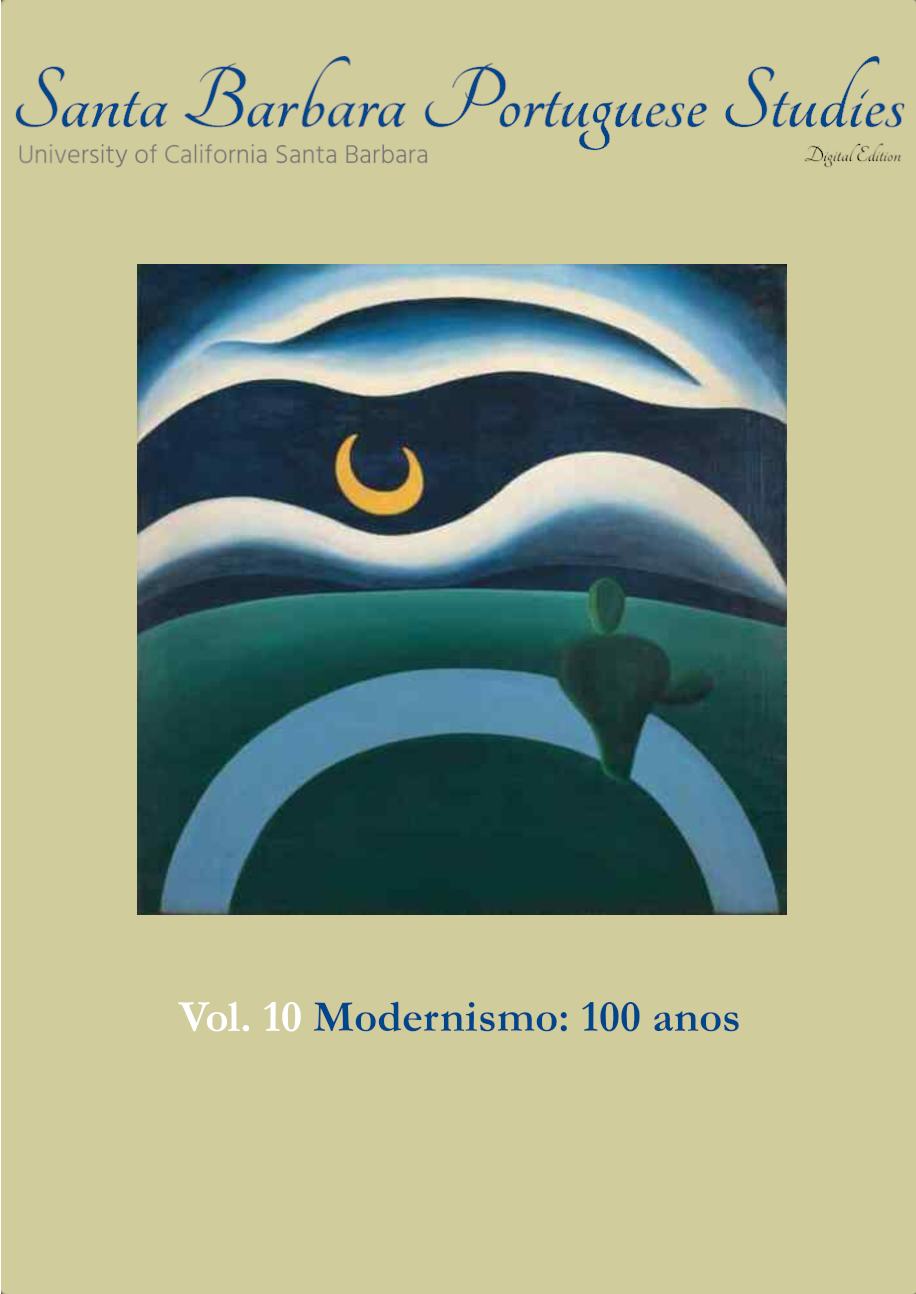Modernismo: 100 anos
It cannot be said that the Modernist Movement, in its general trend and its various waves, was the first to critique and criticize the deleterious effects of the Portuguese colonial adventure in Brazil: genocide of indigenous peoples, slavery, destruction of the environment, and forms of rapacious economic exploitation. But the Modernistas tackled colonial Portugal in the most systematic manner, both by fiercely defending the Brazilian vernacular, the Brazilian Language proposed and employed by Mário de Andrade, with its lively orality, and its “mistakes” (naturally, according to the Portuguese); by proposing a cultural shift which at the same time could embrace all the cultures of the world by devouring it, and in so doing, to make them both foreign and distinctly Brazilian. The Antropofagia of Oswald de Andrade, Tupi or not tupi, that is the question, was as much of a rallying cry as the last verse of a poem by Mário de Andrade: Sou um tupi tangendo um alaúde. Heitor Villa-Lobos, following the same trends, was also seeking ways to weave such yearnings into music, with his original and moving Bachianas Brasileiras.
The wave of renewal brought by the Modernistas was also fundamental to form a generation of scholars whose interests and research were employed to understand their own country. Three of the works produced by this generation of scholars stand out as classics: Raízes do Brasil (1936) by Sérgio Buarque de Holanda, História econômica do Brasil ( 1945) by Caio Prado Jr., and Casa Grande e Senzala (1933) by Gilberto Freyre.
Oswald de Andrade certainly encapsulates the problem posed by the Portuguese colonial enterprise, with his characteristic ironic, dark humor:
Quando o português chegou
Debaixo duma bruta chuva
Vestiu o índio.
Que pena!
Fosse uma manhã de sol
O índio teria despido
O português.
When the Portuguese arrived
Under a humongous squall
He dressed the Indian.
Too bad!
Were it a sunny morning
The Indian would have undressed
The Portuguese*.
Yet, the battle for the language and for cultural references beyond Portugal had already been won in the 19th century. The intellectual and diplomat, Joaquim Nabuco, a close friend of Machado de Assis, wrote: “Portugal has very little in terms of first-hand ideas, erudition and points of view that we would want to adopt. We find this supply in those places where they are created: in Paris, London and Berlin”.
The iconic “Week of Modern Art” took place at the Municipal Theater in São Paulo – a tropical take on the Parisian Palais Garnier (Opéra), reinforcing Mário de Andrade’s verse that São Paulo was a “galicismo a berrar nos desertos da América”, in one of his declarations of love for the city he was born, in the poem “São Paulo, comoção da minha vida”.
It was 1922. One hundred years after Brazil’s Independence from Portugal. But “The Week” as it is now called was not the beginning of the Modernist revolution and neither marked its end. Already with young Anita Malfatti’s painting exhibition, freshly arrived from Paris in 1917, the public could see, not without scandal and controversy, that things were rapidly changing in the fields of the visual arts, music, architecture, literature and ideas. São Paulo was the ideal venue which channeled all this energy: coffee rich, industrial, prolific in immigration, foggy, “Minha Londres das neblinas finas” as again Mário de Andrade would write.
The impact of European immigrants, or its descendants in the visual arts and architecture (Lasar Segall, Victor Brecheret, Alfredo Volpi, Anita Malfatti, Voltolino, Portinari, Visconti, Gregori Warchavchik, among others) was not only central, but their foundation can still be felt to influence defining tendencies in Brazil nowadays.
Oscar Niemayer’s Brasília (1961) was a direct answer to such powerful influences. Oswald de Andrade’s Antropofagia, as well, was at the center of Tropicalismo, the movement that in the sixties would unite visual arts and music; it would equally inspire a dialogue with Concretismo, the avant-garde tendency championed by Haroldo de Campos, Augusto de Campos, Décio Pignatari, the musician Gilberto Mendes, and others.
The importance of Modernismo to Brazilians goes beyond mere words, and I would like to thank Ivan Marques for guest editing this commemorative edition of scholarly works about the 200 Years of Modernismo in Brazil. I extend my gratitude to Nuno Brito as assistant editor.
Élide Valarini Oliver
* My translation
Editor
Élide Valarini Oliver
Professor of Brazilian and Comparative Literature
Director of the Center for Portuguese Studies
UC Santa Barbara
elideoliver@spanport.ucsb.edu
Guest Editor
Ivan Marques
Professor of Brazilian Literature
Faculdade de Filosofia, Letras e Ciências Humanas
Universidade de São Paulo
ivanmarques@usp.br
Assistant Editor
Nuno Brito, Ph.D.
Instituto Camões Lecturer
Department of Spanish and Portuguese
UC Santa Barbara
nuno@ucsb.edu
Volume 10
Introduction by
Ivan Marques, Modernismo: 100 anos


